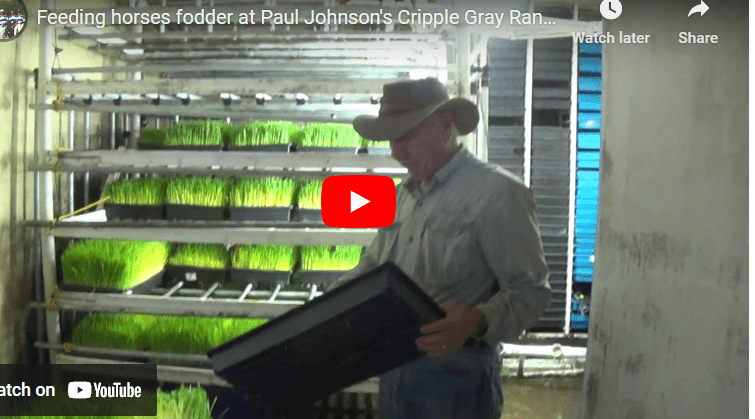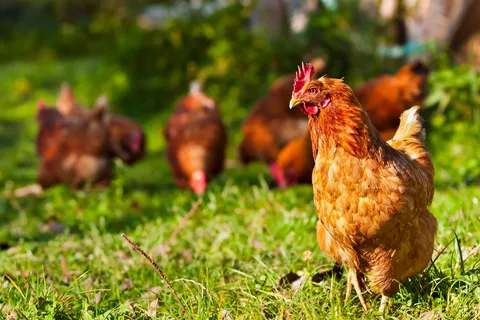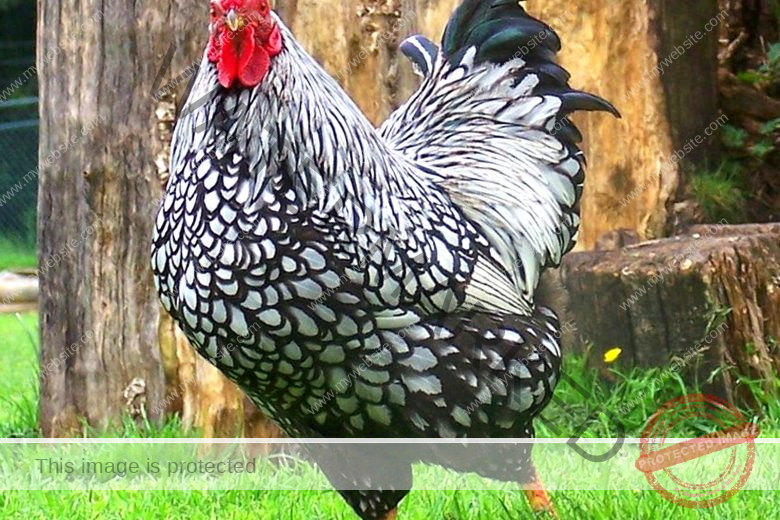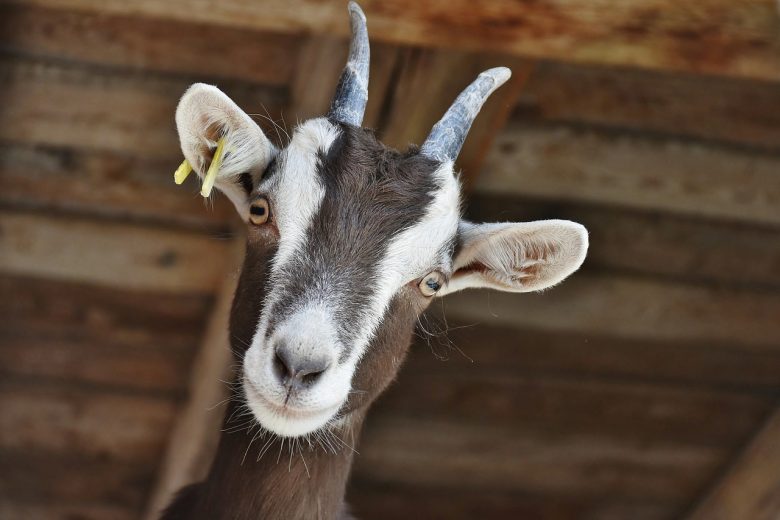This guide is designed to provide step-by-step instructions on the production of hydroponic fodder for horses. It is intended to provide an overview of the process, including the basic principles of hydroponic fodder production, the materials and equipment needed, and the steps involved.
This guide will also provide helpful troubleshooting tips and advice for successful fodder production. This guide is for anyone interested in producing hydroponic fodder for horses, from experienced farmers to novice hobbyists.
With the help of this guide, you can confidently produce high quality fodder for your horses. Whether you are interested in providing them with a consistent source of nutritious food or just want to try something new, hydroponic fodder production is a great way to provide your horses with the best possible nutrition.
Hydroponic Fodder Production PDF for Horses [Step by Step Guide]
Hydroponic fodder production for horses is a method of growing and harvesting fodder for horses in a controlled environment, typically in a greenhouse.
It involves the use of nutrient-rich water instead of soil for growing the fodder and relies on a combination of temperature control, light, and air circulation to help the fodder grow quickly and healthily.
Read Also: [Beginners Guide] Hydroponic Fodder Production For Poultry PDF
This method of fodder production is considered more efficient and cost-effective than traditional methods of growing and harvesting fodder, as it requires less space and can produce a higher yield in a shorter amount of time.
Also, because hydroponic fodder is grown in a more sterile environment, it is generally healthier and of higher quality than traditional fodder, as it is not exposed to the same levels of pests and disease.
This makes it an ideal choice for horse owners who want to provide their animals with the best quality feed available.
Choosing the Right Hydroponic System for Horses
Choosing the right hydroponic system for your horses is an important decision. The system you choose will determine the health and productivity of your horses. Here are some steps to help you choose the right system for your needs.
Read Also: [Beginners Guide] Hydroponic Fodder Production For Rabbits PDF
Step 1: Identify Your Needs
Consider the size of the hydroponic system you need, the type of plants you want to grow, how much space you have available, and how much maintenance you’re willing to do.
Step 2: Research the Different Types Of Hydroponic Systems
There are many different types of hydroponic systems, such as wicking beds, NFT systems, aeroponics, and deep water culture. Research each type of system to determine which one best fits your needs.
Step 3: Consider The Cost
Hydroponic systems vary in price, depending on the size and complexity of the system. Compare the cost of different systems to determine which one is best for your budget.
Read Also: [Beginners Guide] Hydroponic Fodder Production PDF
Step 4: Determine The Right Lighting System
Different types of hydroponic systems require different types of lighting. Research the type of lighting each system uses and decide which one is best for your needs.
Step 5: Consider The Climate
Hydroponic systems are sensitive to temperature and humidity. Make sure the system you choose can withstand the climate in your area.
Step 6: Choose A Reliable Supplier
When purchasing a hydroponic system, look for a reliable supplier. Read reviews and ask questions to make sure you’re buying from a reputable company.
Read Also: [Beginners Guide] Hydroponic Fodder Production PDF
Preparing Hydroponic System for Planting Hydroponic Fodders
You’ve decided to prepare a hydroponic system for planting hydroponic fodders. Here’s a step-by-step guide to help you out.
- Choose the type of hydroponic system that suits your need. There are several types of systems, such as deep water culture, nutrient film technique, and ebb and flow.
- Choose a reservoir. This will depend on the type of system you’ve decided to use. Make sure it’s large enough to hold all of the plants and their root systems.
- Purchase a hydroponic nutrient solution. This solution is specifically formulated for hydroponic growth.
- Prepare the reservoir. Clean it thoroughly and fill it with the nutrient solution. Make sure the pH of the solution is between 5.5 and 6.5.
- Install a timer for the air pump. This will help ensure that the plants receive a consistent amount of oxygen.
- Place your hydroponic growing media into the reservoir. This could be clay pebbles, coconut coir, or perlite.
- Plant your hydroponic fodders into the media. Make sure to follow the directions for planting the specific type of fodder you’ve chosen.
- Install a system to collect and distribute water. This could be a drip system or an automated system.
- Install a light. Choose a light that’s suitable for hydroponic fodders, such as LED or fluorescent.
- Monitor the system daily. Check the pH levels, nutrient levels, and water levels to ensure they’re within the proper range.
Step by Step Guide for Planting Hydroponic fodders For Horses
You’ve decided to plant hydroponic fodder for your horses! You’re about to take the first step towards a healthier, happier horse. Here are some step-by-step instructions to get you started.
Step 1: Get the Supplies You Need
You’ll need to get the supplies you need. You’ll need to purchase trays, grow lights, and a nutrient solution. Make sure to purchase the right size trays for your horses and the right intensity of grow lights.
You’ll also need to get a nutrient solution specifically designed for hydroponic fodder.
Step 2: Preparing the Fodder Seeds
Start by soaking the seeds in a bowl of clean water. This will help to soften the outer shell and encourage the germination process.
Step 3: Prepare the Hydroponic Fodder Trays
Next, you’ll need to prepare the hydroponic fodder trays. Start by filling the trays with a nutrient solution.
Make sure the nutrient solution is at the right pH level for the type of fodder you’re growing. Once the trays are filled, sprinkle the seeds over the surface of the solution. Make sure to evenly distribute the seeds.
Step 4: Place Them under the Grow Lights
When the trays are ready, place them under the grow lights. Make sure the lights are at the right intensity and distance from the trays. You’ll need to adjust the lights as the fodder grows.
Step 5: Watered Daily
Now it’s time to wait. The fodder will need to be watered daily. Make sure to adjust the amount of water according to the type of fodder you’re growing.
Check the trays for signs of pests or disease and take the necessary steps to prevent an infestation or infection.
Step 6: Harvest
When the fodder is ready for harvest, you’ll need to carefully remove the trays from the grow lights. Then, cut the fodder from the trays. Make sure to cut the fodder at the base of the root system.
Step 7: Feed the Fodder to Your Horses
Finally, you’ll need to feed the fodder to your horses. Make sure to monitor their reactions to the fodder and adjust feedings according to their needs.
Maintaining Optimal Growing Conditions
Step 1. Monitor your Hydroponics’ Temperature.
The optimal temperature range for most types of plants is between 70-85 degrees Fahrenheit. Maintaining this temperature range is important for the health of your plants and will help them grow quickly.
Step 2. Control The pH Level Of Your Hydroponic System.
Different plants require different pH levels to thrive. You should test the pH level of the water and adjust it accordingly.
Step 3. Ensure Your Hydroponic System Is Getting Enough Light.
Plants need a minimum of 8 hours of light each day to grow and thrive. If you are using artificial lighting, be sure to adjust it periodically to keep your plants healthy.
Step 4. Regulate The Nutrient Levels In Your Hydroponic System
Different plants require different levels of nutrients, so be sure to adjust the nutrient levels in your system accordingly.
Step 5. Regularly Check Your Hydroponic System For Signs Of Pests Or Diseases
Diseases can quickly spread throughout your system if left unchecked, so be sure to check for signs of pests or diseases regularly.
Step 6. Monitor and Adjust The Oxygen Levels In Your Hydroponic System
Too little oxygen can stunt the growth of your plants, while too much can be toxic. Be sure to adjust the oxygen levels in your system to ensure optimal growth.
Step 7. Monitor and Adjust The Humidity Levels In Your Hydroponic System
Too much humidity can cause mold and mildew to grow, while too little can stunt the growth of your plants. Be sure to adjust the humidity levels in your system to ensure optimal growth.
Step 8. Keep Your Hydroponic System Clean
Regularly cleaning your system will help keep your plants healthy and prevent diseases from spreading.
Nutrient Solutions for Healthy Fodder
Do you want to ensure your hydroponic fodder is healthy and nutrient-rich? Nutrient solutions are the answer.
Nutrient solutions are designed to provide the necessary nutrients to your fodder in the right balance, ensuring they get all they need to grow healthy and strong.
They come in both liquid and powder form and can be applied to your fodder either in the form of a drench, a foliar spray, or a root feed.
Whether you choose to use a liquid or powder solution, it’s important to select one that is suitable for your specific fodder type and the growth stage your fodder is in.
Also, you should always read and follow the instructions on the nutrient solution label to ensure you are using it correctly.
With the right nutrient solution, you can ensure your hydroponic fodder is healthy and full of the nutrients required for successful growth.
Troubleshooting Common Hydroponic Issues
If you are looking for ways to troubleshoot common hydroponic issues. Don’t worry – there are plenty of steps you can take to resolve most issues.
Start by highlighting the most common troubleshooting techniques.
- Make sure your hydroponic system is set up correctly. Ensure the pump is functioning properly and all lines are free of clogs.
- Check the pH and nutrient levels of your solution, and adjust as necessary. Make sure your growing medium is not too wet or too dry.
- If you’re growing a variety of plants, make sure each one is receiving the correct amount of nutrients.
- Inspect your system for signs of pests or diseases. If you see any, address the issue right away.
- Make sure your lights are functioning properly and provide the right amount of light for your plants.
- Ventilate your grow room to help control temperature and humidity levels.
- Pay attention to your plants’ growth and address any deficiencies.
- Make sure the air temperature and humidity levels are where they need to be.
- Ensure you keep your grow room clean by removing any dead or decaying matter.
Challenges of Hydroponic Fodder for Horses
Here are some of the challenges of Hydroponic Fodder for Horses
- Cost – Hydroponic fodder production requires an initial investment to purchase equipment, supplies, and systems.
- Labor – Maintaining and harvesting the fodder requires regular attention and labor.
- Space – Hydroponic fodder production systems require ample space for setup.
- Climate – The right climate and environment are necessary for successful hydroponic fodder production.
- Time – Fodder production requires regular time for planting, harvesting, and maintenance.
- Quality – Hydroponic fodder must be regularly monitored for quality and safety.
- Water – Water availability and quality are essential for hydroponic fodder production.
Benefits of Hydroponic Fodder Production
Here are some of the benefits of Hydroponic Fodder Production:
- Nutrition – Hydroponic fodder provides a highly nutritious feed source for horses.
- Freshness – Hydroponic fodder is harvested fresh and can be consumed right away.
- Convenience – Hydroponic fodder production provides a convenient and efficient feed source.
- Control – Hydroponic fodder production offers total control over the quality and safety of the feed.
- Cost – Hydroponic fodder production can reduce feed costs over time.
- Waste – Hydroponic fodder production reduces waste from traditional hay and feed sources.
- Environment – Hydroponic fodder production is an environmentally friendly alternative to traditional feed sources.
Hydroponic Fodder Cost per Kg
Hydroponic fodder is an innovative way to feed livestock, as it is produced using hydroponic techniques and requires less water and land than traditional farming methods.
Hydroponic fodder has a higher nutrient density than traditional feed, and can be produced without the use of pesticides and chemicals. The cost of hydroponic fodder per kilogram can vary depending on production methods, feedstock availability, and the quality of the fodder produced.
In general, hydroponic fodder costs between $1-2 per kilogram, depending on the production system used.
Hydroponic Fodder Business Plan
Developing a hydroponic fodder business plan is essential for any farmer looking to switch to this innovative form of animal feed production.
A good business plan should include a detailed financial analysis of the costs associated with hydroponic fodder production, such as the cost of seeds, equipment, and labor.
Also, it is important to consider the potential market for the product, and to include a marketing strategy in the business plan.
A hydroponic fodder business plan should include a timeline for the production of the product, and a plan for how the product will be distributed to customers.
Low Cost Hydroponic Fodder System
For farmers looking to produce hydroponic fodder on a tight budget, there are several low-cost systems available.
These systems typically use recycled materials, such as plastic bottles or buckets, to contain the fodder, as well as nutrient-rich solutions to feed the plants.
These systems often require no additional power source, as the plants are able to absorb energy from the sun.
These systems are ideal for small-scale operations and can be set up relatively quickly and inexpensively.
Hydroponic Fodder Disadvantages
Despite the advantages of hydroponic fodder, some potential disadvantages must be considered.
One of the main drawbacks is that hydroponic fodder is more expensive to produce than traditional feed, as the cost of seeds and equipment can be high.
Hydroponic fodder may not be suitable for all types of animals, as some animals may not be able to digest the high nutrient content of the feed.
Hydroponic fodder requires a highly controlled environment to produce, which can be difficult to achieve without the right equipment and expertise.
Hydroponic Fodder Trays
Hydroponic fodder trays are an essential part of any hydroponic fodder system. These trays are typically made of plastic and are used to contain the fodder and to allow for the growth of the plants.
Hydroponic fodder trays come in a variety of sizes and shapes and can be customized depending on the needs of the farmer. The trays should be placed in a location that receives ample sunlight and is free from pests and disease.
The trays should be cleaned regularly to ensure proper drainage and prevent the spread of disease.
Conclusion
Hydroponic fodder production is an effective way to feed horses with high-quality and nutritious fodder. The step by step guide provides a comprehensive understanding of the process, from setting up the system to providing nutrition for the horses.
The guide provides a detailed explanation of the process and the necessary supplies needed to produce hydroponic fodder for horses.
The guide is also beneficial for those wanting to save money, as the cost of hydroponic fodder production is much lower than purchasing hay and other feed.






Can you tell me if there is any risk of laminitis with the system
David.
The risk of laminitis in horses fed hydroponic fodder may be influenced by several factors:
1. Nutrient Composition: The nutrient content of the hydroponic fodder needs to be balanced and appropriate for horses. Rapidly growing, lush fodder can be high in sugars, which may increase the risk of laminitis, especially in horses prone to metabolic issues.
2. Feeding Management: Proper management of the hydroponic fodder system is crucial. Horses should be fed appropriate amounts to prevent overconsumption of high-sugar fodder.
3. Individual Horse Factors: Some horses are more susceptible to laminitis due to factors like breed, age, weight, and metabolic conditions. It’s essential to consider the specific needs of each horse.
4. Transition Period: When introducing hydroponic fodder to a horse’s diet, a gradual transition is recommended to allow their digestive system to adapt.
5. Monitoring: Regular monitoring of horses’ body condition, weight, and overall health is essential to detect any signs of laminitis early.
To mitigate the risk of laminitis when using hydroponic fodder, consult with a veterinarian or equine nutritionist to develop a feeding plan tailored to your horses’ specific needs.
They can help ensure that the nutrient content of the fodder is suitable and that feeding practices are safe to prevent laminitis.